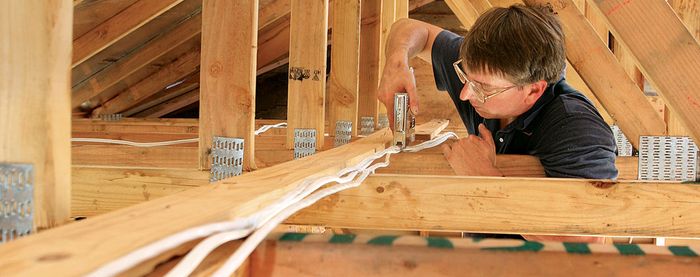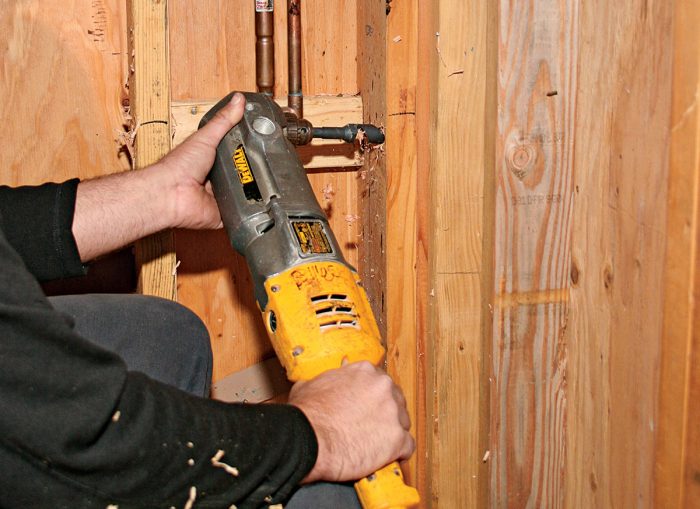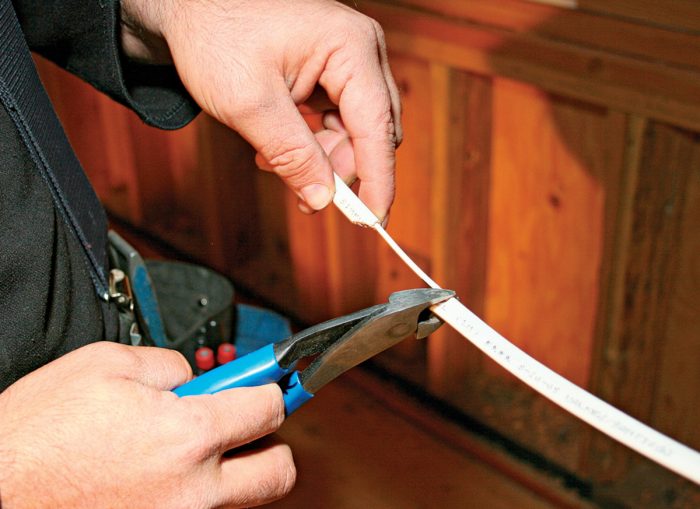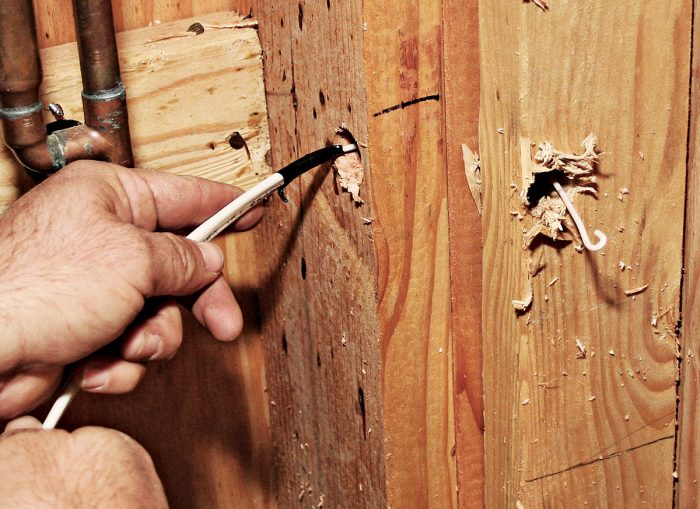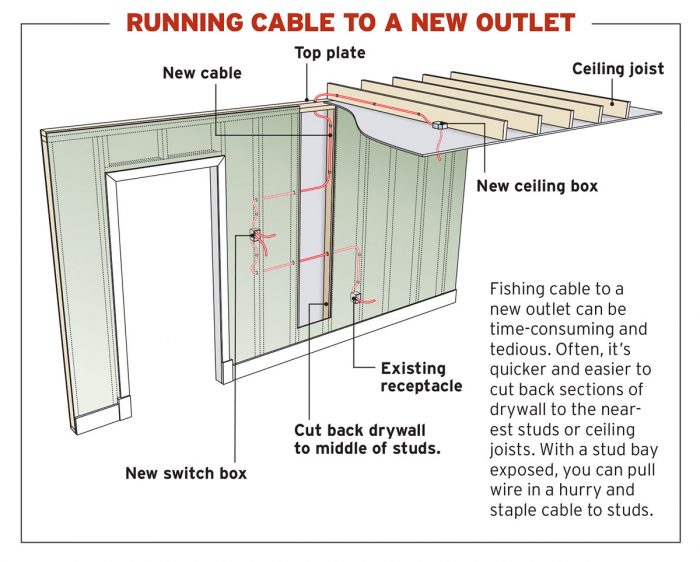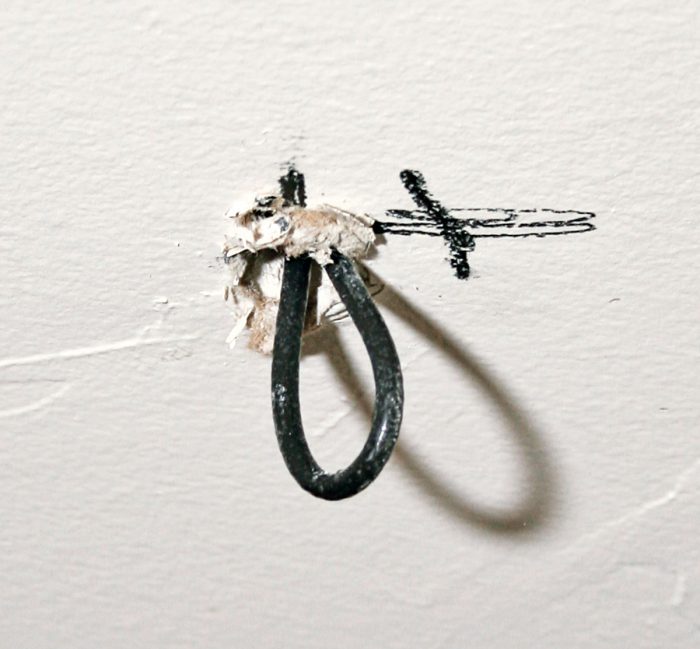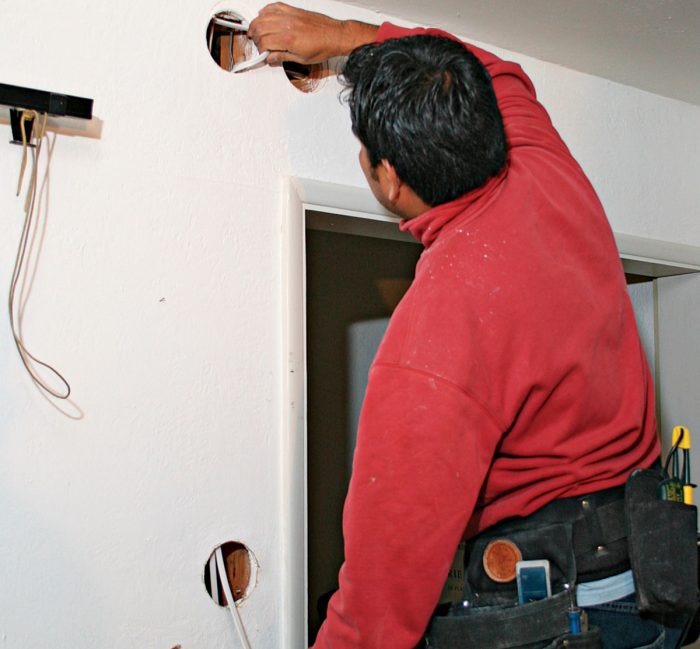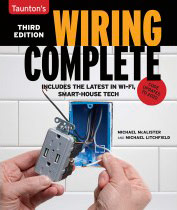Pulling Cable vs. Fishing Cable
Running cable between outlets in new construction is relatively straightforward, but it gets tricky when you have to fish cable behind finish walls or ceilings.
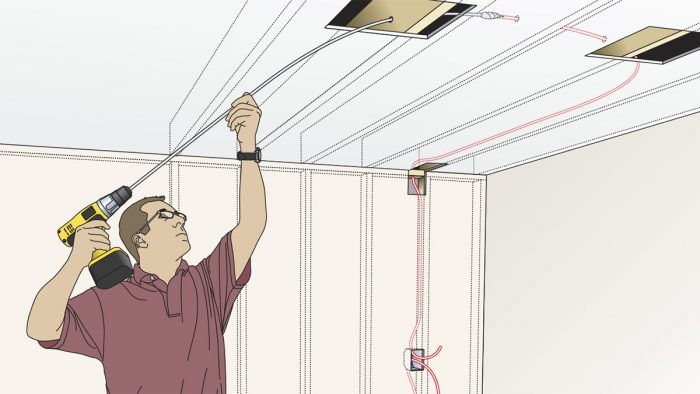
For greatest efficiency, install cable in two steps: (1) Pull cable between outlets, leaving roughly 1 ft. extra beyond each box for future splices, and (2) retrace your steps, stapling cable to framing and installing nail-protection plates. As with drilling, it doesn’t matter whether you start pulling cable from the first box of a circuit or from the last box. If there are several circuits in a room, start at one end and proceed along each circuit, pulling cable until all the boxes are wired. Don’t jump around: You may become confused and miss a box.
| Pro Tip: Put a piece of red tape on the first box in each circuit to ensure that you run cable from it to the panel. On a complex job with many circuits, you might run cable between all the outlets in a circuit but forget to install the home-run cable that will energize the circuit. Not something you want to discover after the drywall is up. |
In new construction, electricians usually place several wire reels by the panel and pull cables from there toward the first box of each circuit 1. These circuit segments are called “home runs.” Once electricians have run cable to all the home-run boxes, they move a reel next to each box and continue to pull cable outward until they reach the last box 2. When doing remodel wiring in a house with a crawlspace, however, electricians often start at the last box and pull cables toward the panel. When they reach the first boxes of several circuits, they will move the wire reels to those locations. From there, they feed, say, three cables down to a helper in the crawlspace. The helper can pull all the cables toward the panel at the same time. This method is much faster than pulling single cables three different times.
Staple cable along stud centers to prevent nail or screw punctures. It’s acceptable to stack two cables under one staple 3, but use standoffs 4 to fasten three or more cables traveling along the same path. (Multi-gang boxes are fed by multiple cables, for example.) Standoffs and ties bundle cables loosely to prevent heat buildup. As you secure cable, install nail plates where needed 5.
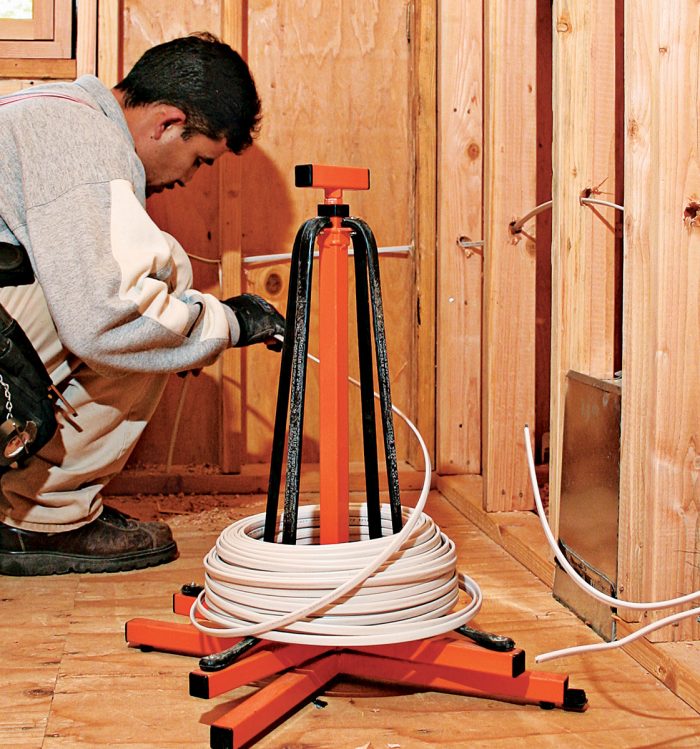
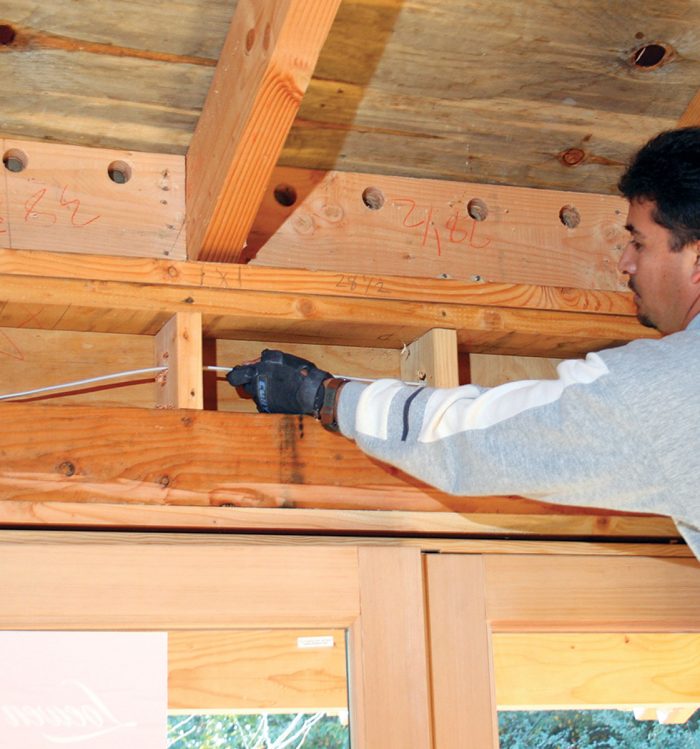
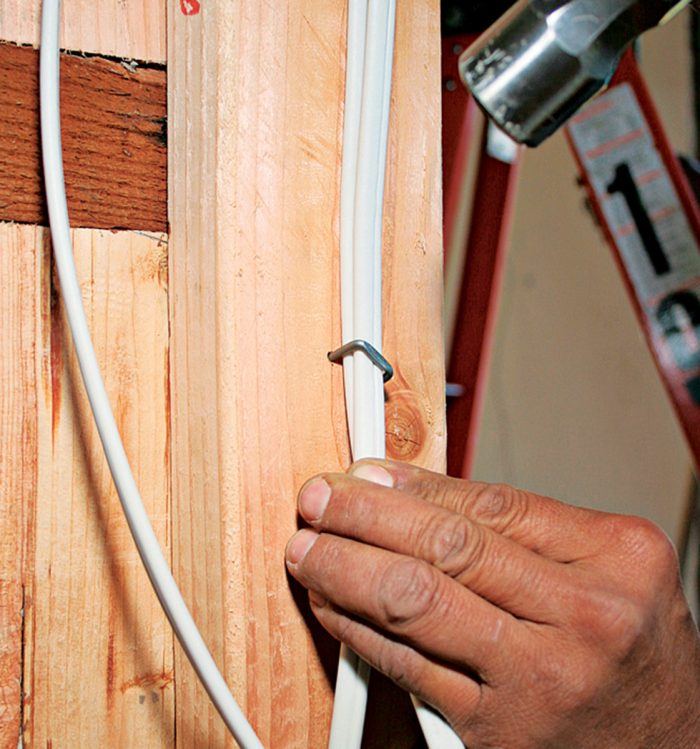
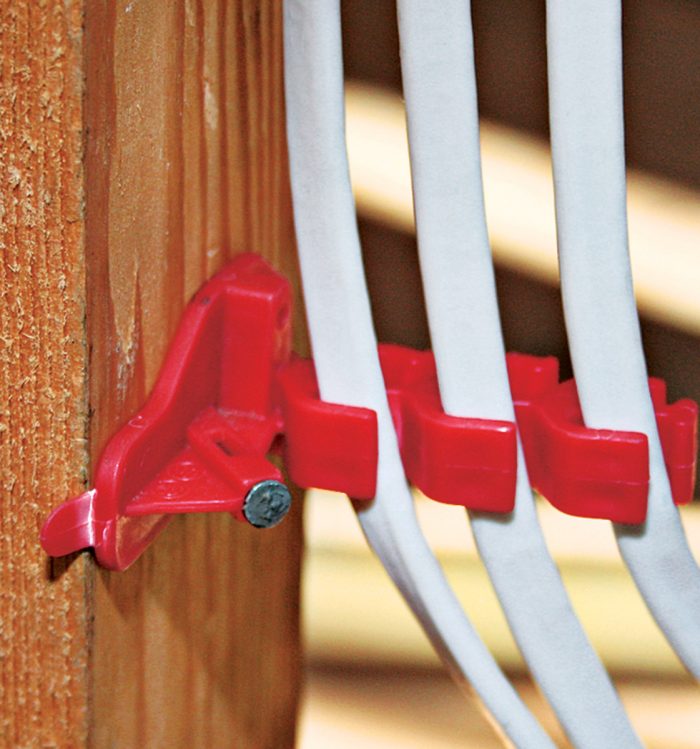
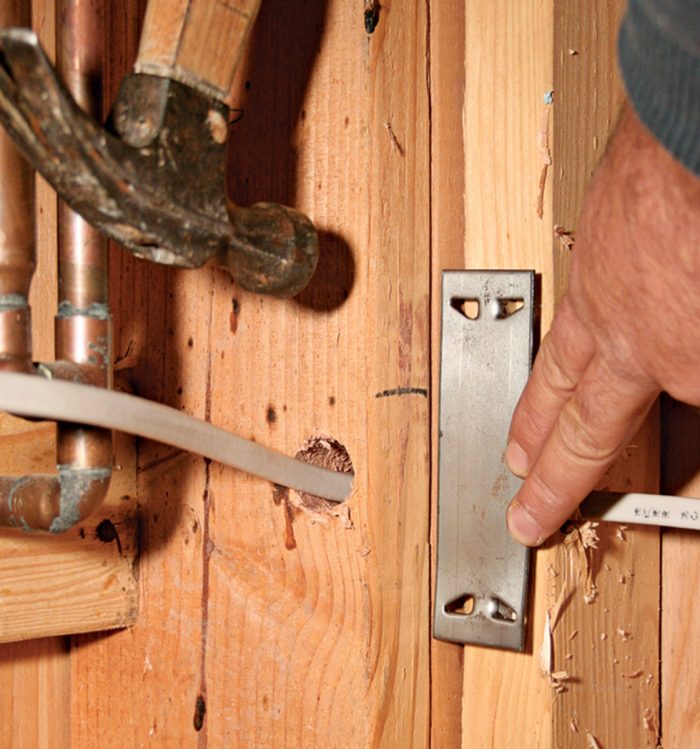
Feeding Cable Through Corners
Corners are usually built by nailing three or four studs together, so feeding cable through them can be tricky. Drill intersecting holes at the same height, as shown in photos 1 and 2. Use diagonal cutters to cut through the sheathing and two of the wires, thus leaving a single wire protruding from the cable 3.
Use pliers to loop the end of the wire. Then wrap tape around the end of the cable and onto the wire to create a tapering point that will slide easier through the hole. Push the wire through the corner holes until it emerges from the other side 4. If the wire gets hung up midway through, insert a finger from the other side to fish for its end.
Fishing Cable Behind Finish Walls
Most electricians hate fishing wire behind existing walls. It can be tricky to find the cable and time-consuming to patch the holes in plaster or drywall. If you’re adding a box or two, try fishing cable behind the wall. But if you’re rewiring an entire room, it’s probably faster to cut a “wiring trench” in the wall. Before cutting into or drilling through a wall, however, turn off power to the area.
If you’re adding an outlet over an unfinished basement, fishing cable can be straightforward. Outline and cut out an opening for the new box, insert a flex bit into the opening, and then drill down through the wall’s bottom plate 1 (wear gloves to protect hands). When the bit emerges into the basement, a helper can insert one wire of the new cable into the small “fish hole” near the bit’s point. As you slowly back the bit out of the box opening, you pull new cable into it 2. No fish tape required! The only downside is that the reversing drill can twist the cable. This problem is easily avoided by sliding a swivel kellum over the cable end instead of inserting a cable wire into the flex bit hole 3. Because the kellum turns, the cable doesn’t.
Alternatively, you can start by removing a wall box. The closest power source is often an existing outlet. Cut power to that outlet and test to make sure it’s off. The easiest way to access the cable is to disconnect the wires to the receptacle 4 and remove it. Then remove the box 5, which may require using a metal-cutting reciprocating-saw blade to cut through the nails holding the box to the stud. Fish a new cable leg to the location and insert the new and old cables into a new cut-in box. Secure the cut-in box to the finish surface, splice the cables inside the box, and connect pigtails from the splices to the new receptacle.
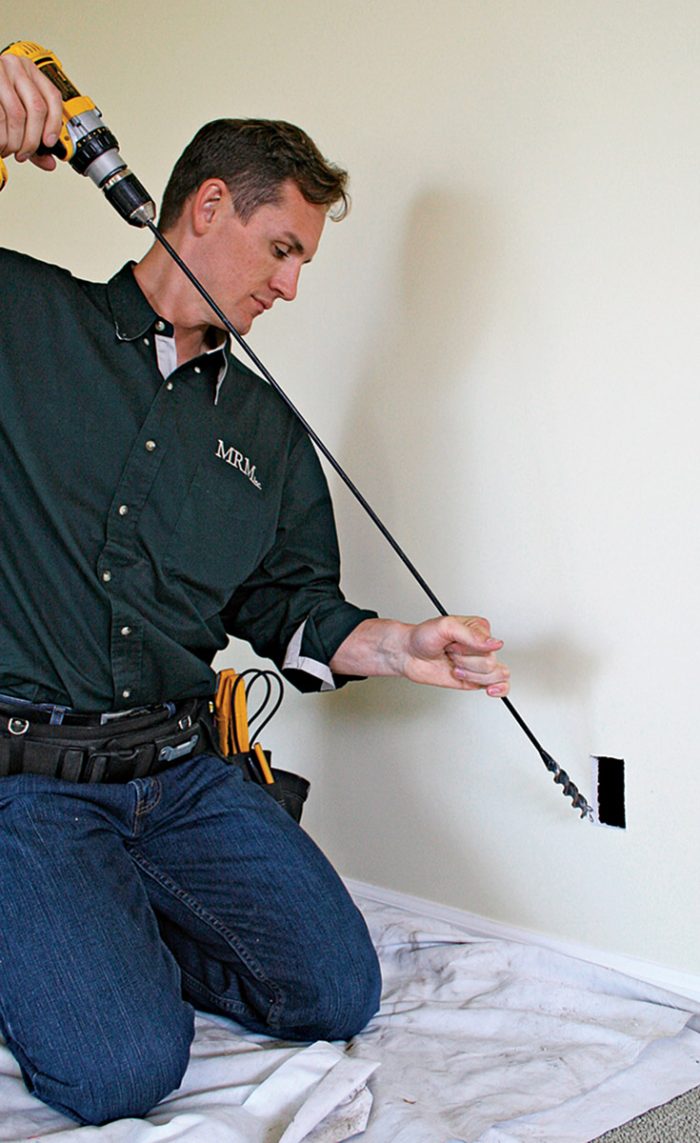 |
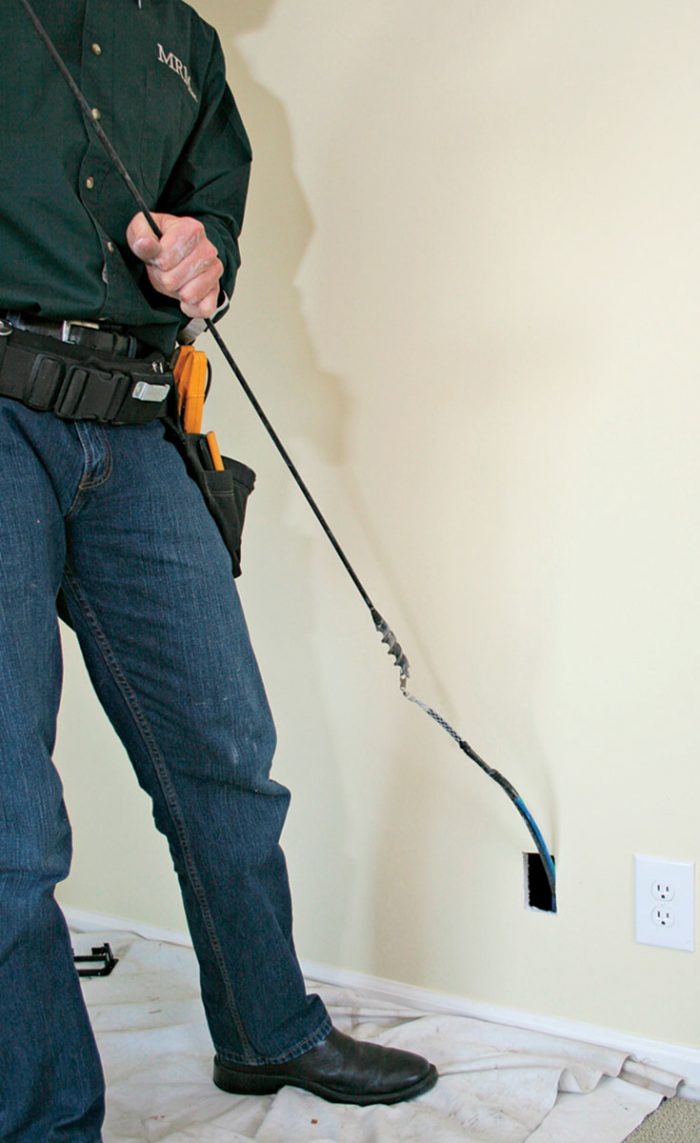 |
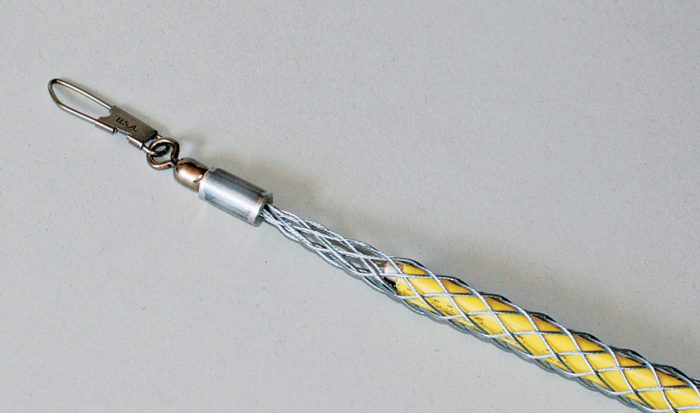
OR
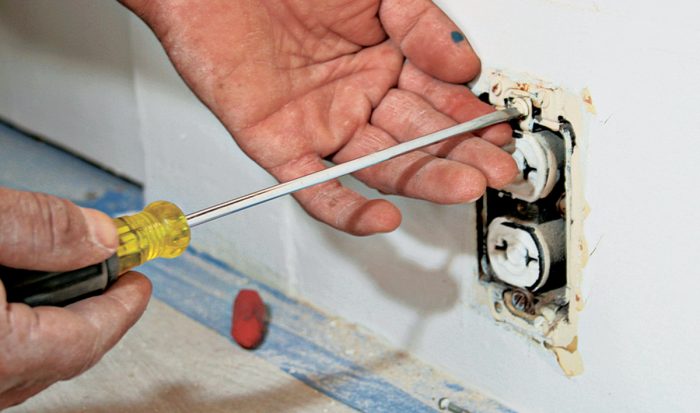
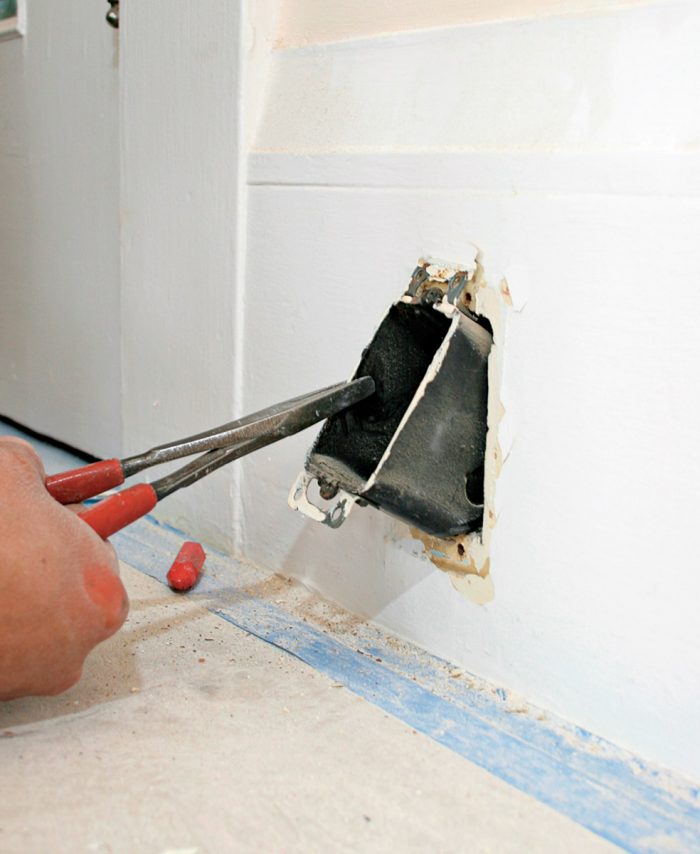
Fishing Cable to a Ceiling Fixture
Fishing cable to ceiling fixtures or wall switches is usually a bit complicated. If there is an unfinished attic above or a basement below, run the cable across it, then route the cable through a stud bay to the new box in the ceiling. To run cable to a ceiling light, for example, drill up through the fixture location using a 3⁄16-in. by 12-in. bit to minimize patching later 1. Use a bit at least 6 in. long so a helper in the attic can see it—use a longer one if the floor of the attic is covered with insulation. Measure the distance from the bit to the wall; a helper in the attic can use that measurement to locate the nearest stud bay to drill an access hole into. If you’re working alone, loop the end of a stiff piece of wire about 1 ft. long 2 and insert it in the drilled hole; friction will keep the wire upright in the hole until you can locate it in the attic.
If there’s no access above the ceiling and/or cable must cross several ceiling joists to get from a switch to a light fixture, you’ll have to cut into finish surfaces at several points 3. To access cable in a stud bay, you’ll need a cutout to expose the top plate. Using a flex bit may minimize the number of holes you must cut to drill across ceiling joists. But as noted earlier, it may ultimately take less time to cut and repair a single slot running across several joists than to patch a number of isolated holes. Whatever method you choose, make cuts cleanly to facilitate repairs. First outline all cuts using a utility knife.
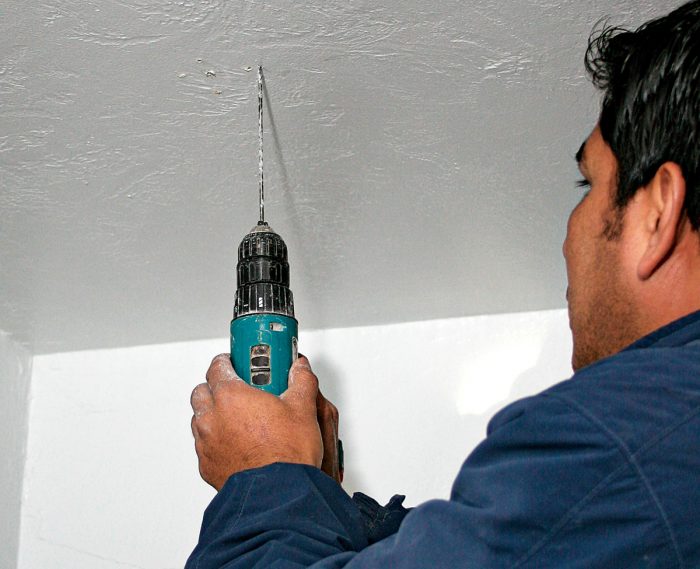
Excerpted from Wiring Complete, 3rd Edition (The Taunton Press, 2017) by Michael Litchfield and Michael McAlister
Available in the Taunton Store and at Amazon.com.
